If so, you’ve come to the right place. SD Shark Diving Expeditions is locally owned and we’ve been safely delivering world-class Great White Shark Dives at Guadalupe Island since 2001. We offer 5–6 day, white shark diving packages, We are proud to offer you a choice of three different White Shark diving vessels. The Belle Amie and the Nautilus Explorer are the largest and most luxurious White Shark diving vessels on the west coast and are extremely popular. They book up many months ahead so if you want to go on those vessels…book now. The Nautilus Under Sea was the former Undersea Hunter which operated out of Costa Rica for many years. The vessel has been refurbished, upgraded, and lengthened.
Belle Amie
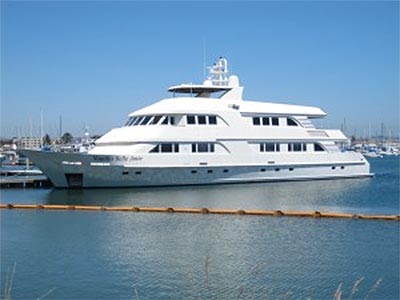
Nautilus Explorer
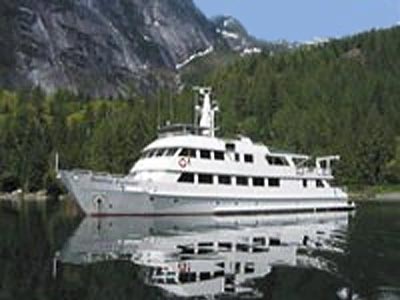
Nautilus Under Sea
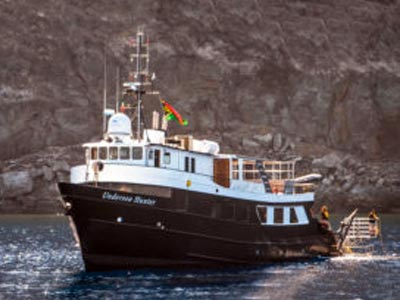
Boat Accommodations
Accommodations
The Nautilus Belle Amie offers accommodations to suit all preferences ranging from luxurious premium suites to cost effective staterooms on the lower deck.
The “Nautilus Belle Amie†is the largest most luxurious live aboard shark diving vessel on Earth. At 140 feet long, 33 feet wide and 500 tons she is incredibly spacious and stable. Built in 2005 at Bollinger Shipyard USA, and completely refurbished in 2014 with a new interior and dive equipment.
The Nautilus Belle Amie has a steel hull and super structure built with the highest standards and craftsmanship. This beautiful ship has everything! With 2 Premium suites on the main deck that can be combined into 1 VIP suite.
The upper deck has 6 Superior suites with ocean views. The lower deck has 8 Staterooms and 1 Triple berth. She has a enormous interior dining room and lounge area. There is a huge sun deck on top with a bar and hot tub.
The Dive Deck is massive with all the space and amenities you can imagine. Rebreather friendly and NITROX is available. The 5 new shark cages are “State of the Art†with some amazing capabilities.

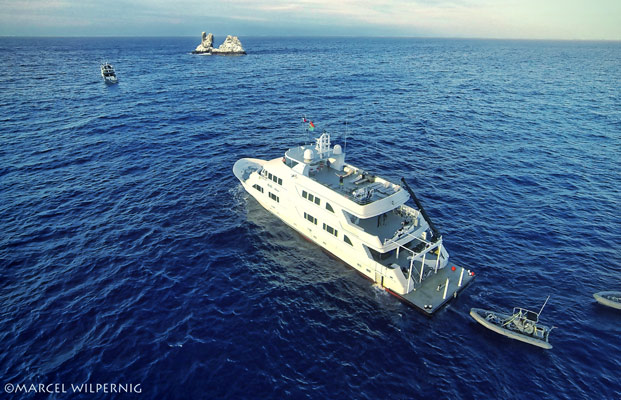
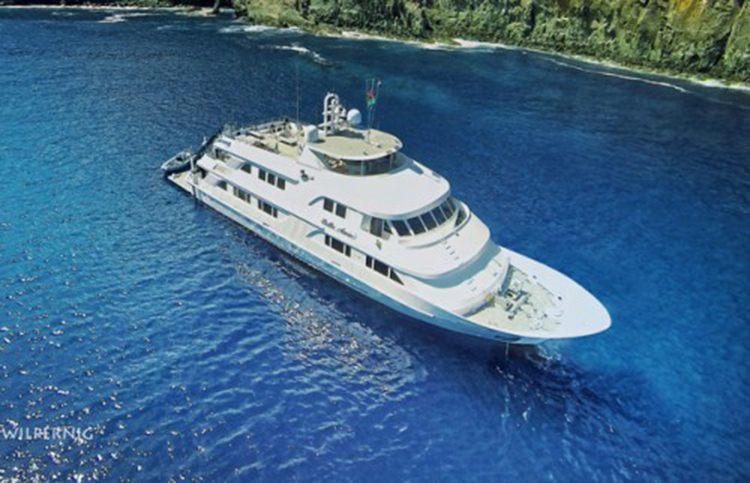


Premium Suites
Emerald & Cortes
Two spacious premium suites are available on the main deck. En-suite bathrooms with double sinks and showers. Large windows, plenty of sunlight, large storage area and personal flat screen TV.




Superior Suites
Cuervo, Inde, Dofleini, Rosario, Swell, Nautilus
The Nautilus Belle Amie has 6 superior suites on the upper deck. Superior rooms have large double windows.




Staterooms
A-H
The lower deck has 8 comfy staterooms with various bed configurations (single and double occupancy). An affordable triple occupancy stateroom is also available .
Room Features
- Bathrooms with showers in all suites.
- Internet via Wi-Fi.
- Windows and/or portholes in every room.
- Superior windows.
- Double Portholes.
- Beautiful bedding, and comfortable details.
- Air conditioning (AC) and heating throughout the ship.
- A dedicated and enthusiastic crew of men and women from around the world.
- Dinning Room.



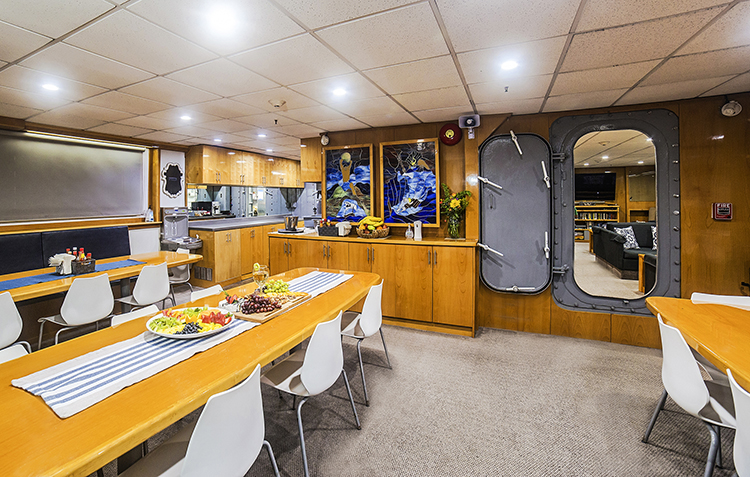
Nautilus Explorer
The Nautilus Explorer is a Millennium Boat Built and Launched in Vancouver, B.C. in 2000.
For a small ship, the Nautilus Explorer feels “plenty big†(or so our guests tell us). There is ample room to find a quiet place to read, chat, fill out your divelog or journal or work on editing the images you shot that day – whether in the separate dining room, main salon or one of the upper sundecks. And there is nothing like a soak under the stars in the sparkling clear fresh water of our hot tub after a day of diving or exploration. The main salon also serves as the ship’s entertainment center with very “comfy†couches, a great library, a well stocked bar and select evening video showings, presentations and slide shows.
- 132′ long, 27′ wide. Small ship size with a much bigger feel
- 11 – 12 mph cruise speed
- Steel hull and superstructure for your safety
- 7000 gallon fresh water capacity and 3600 gallons-per-day water maker allowing you to shower as often as you like
- Quiet twin 70 kw generators operating 24 hours per day with precise voltage and frequency control. Ship’s power is 110 volts ac , 60 Hz)
- Air-conditioning and heating throughout. Comfort in every climate
Ship Accommodations





Staterooms
( All eight lower deck )
Staterooms have private heads with separate shower stalls, central air conditioning and measure 90 square feet. Six of the staterooms have side by side beds. Two of the staterooms have large double beds and additional storage area. There is also one co-ed triple occupancy stateroom.
Hot Tub Deck
Three superior suites on the hot-tub deck measure 145 sq. ft and have large exterior windows. They each have private facilities, a desk and either bureau or wardrobe. Two of these suites have doors that open directly outside. The third suite boasts a large flat screen TV and DVD player. The premium suite is also located on the hot-tub deck and is twice the size of the other suites. It has a separate bedroom and lounge each with a large flat screen TV and DVD player, private facilities with a full-size bathtub and shower plus large private windows looking out on an ocean view. The lounge in this suite has a beautiful floor to ceiling picture window.




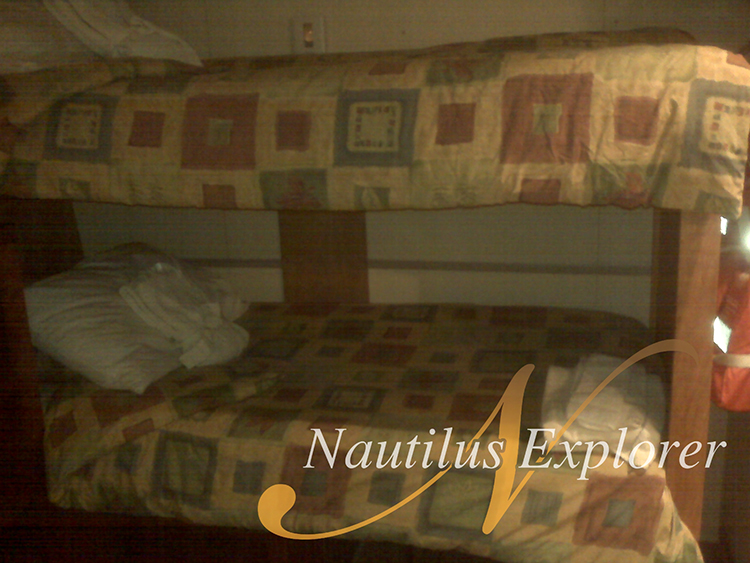
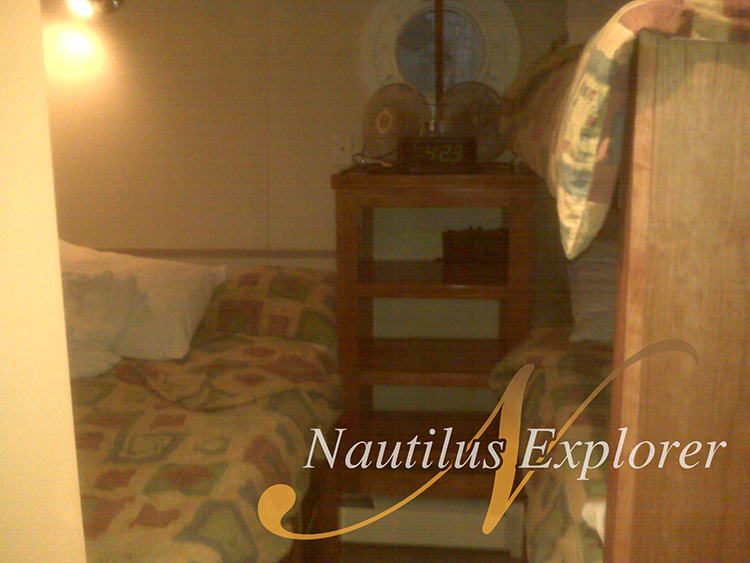

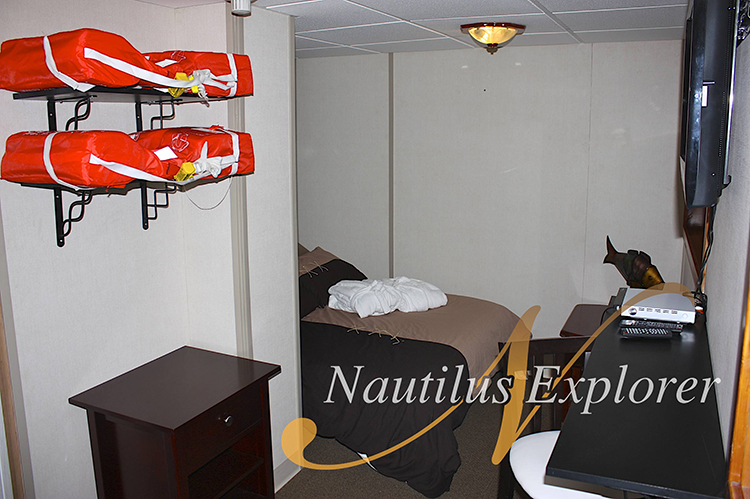
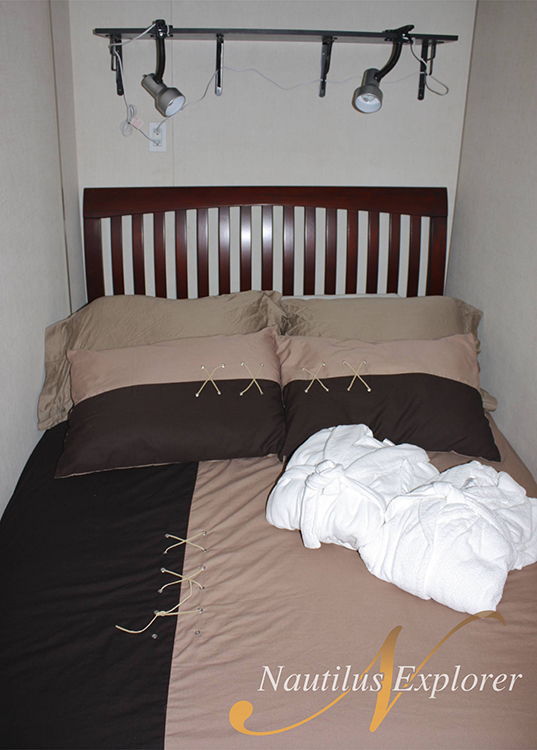




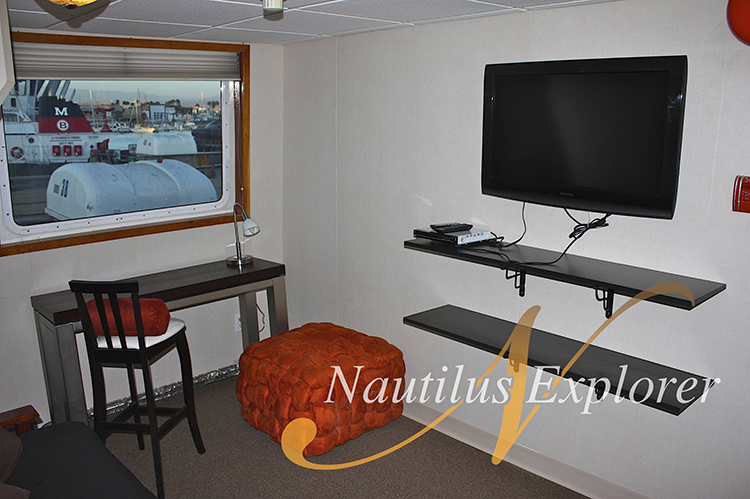
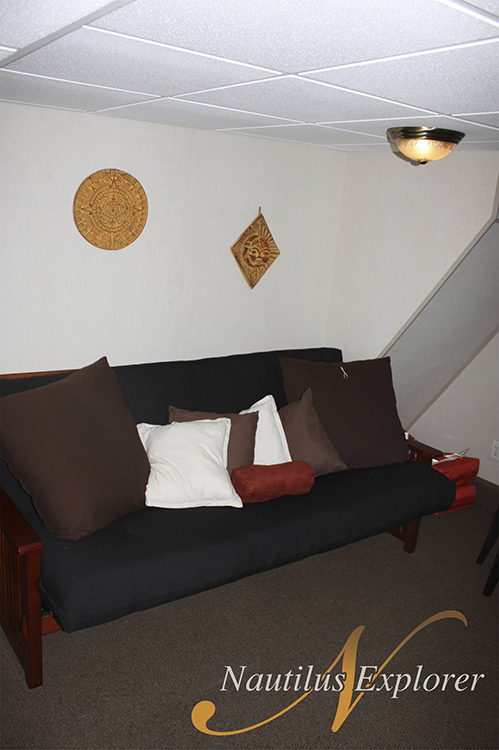
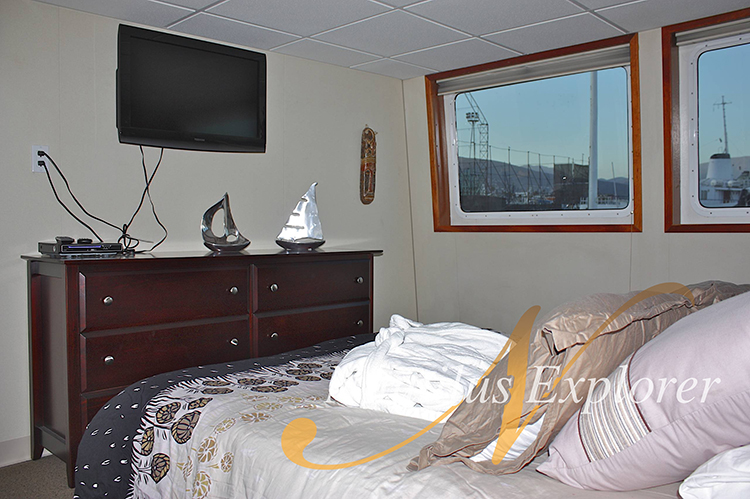
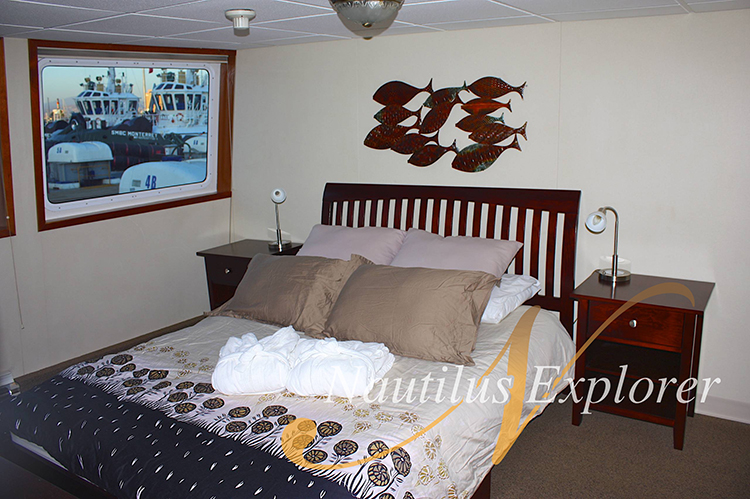

The Nautilus Under Sea
Vessel Specs:
[table id=10 /]
Accommodations
- Double Staterooms
- Triple Stateroom
- Premium Suite
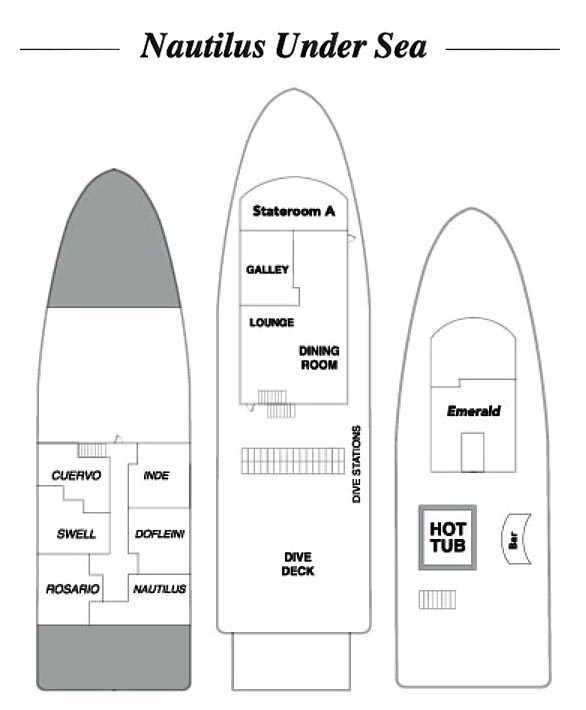
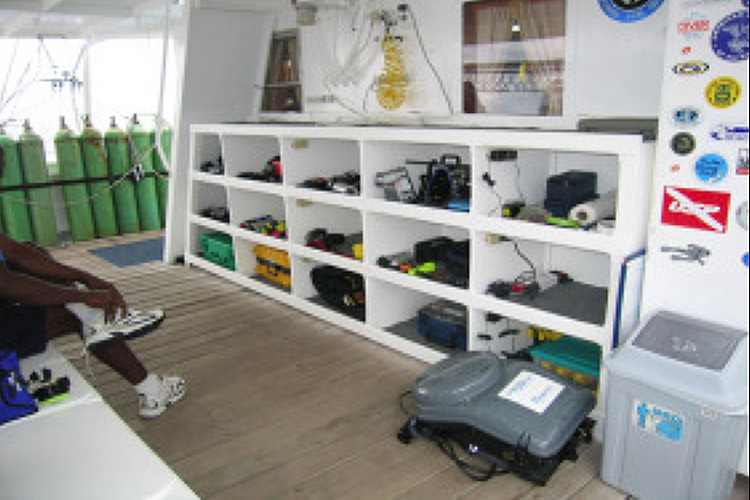
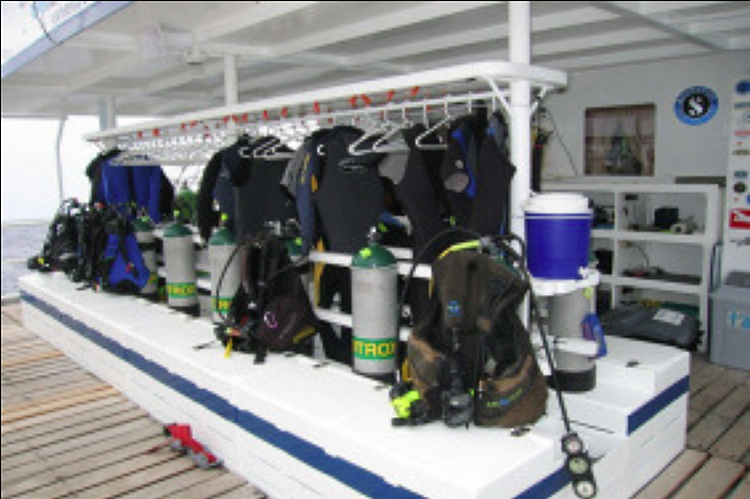
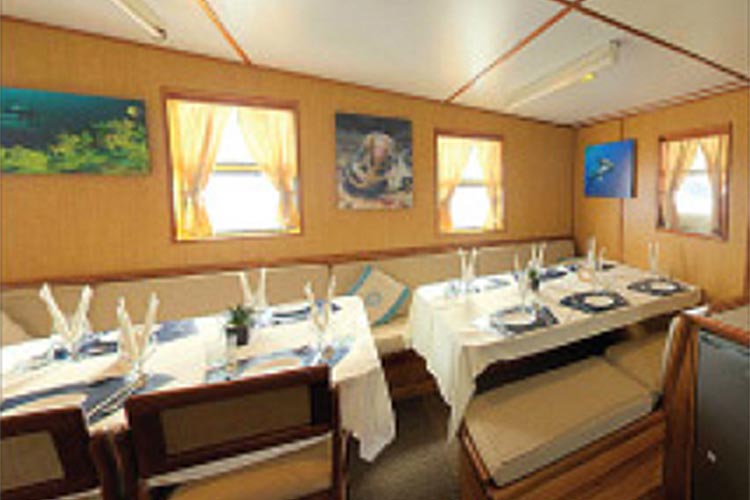
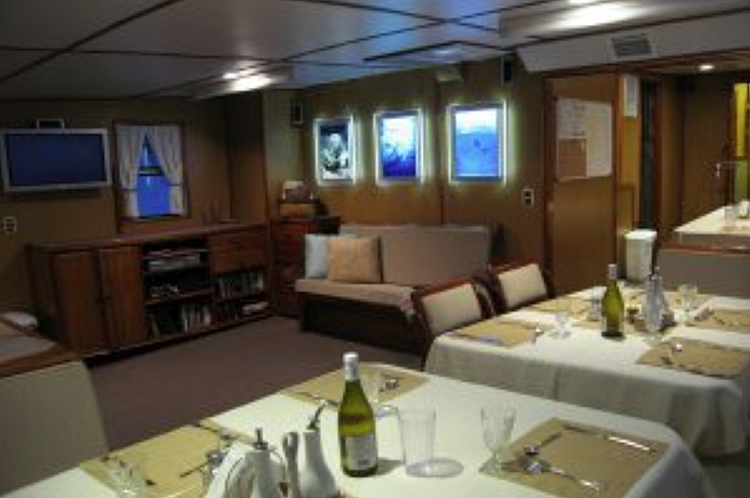
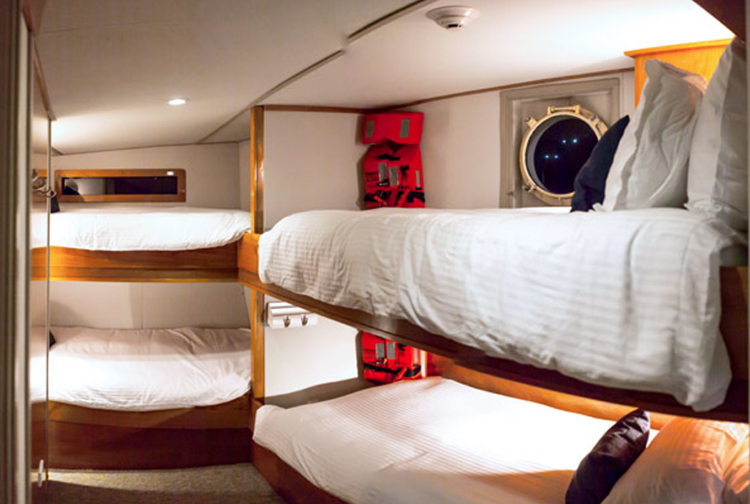
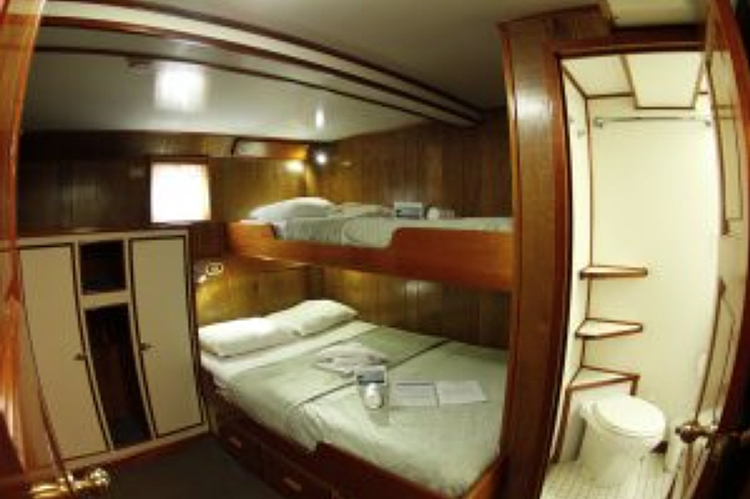
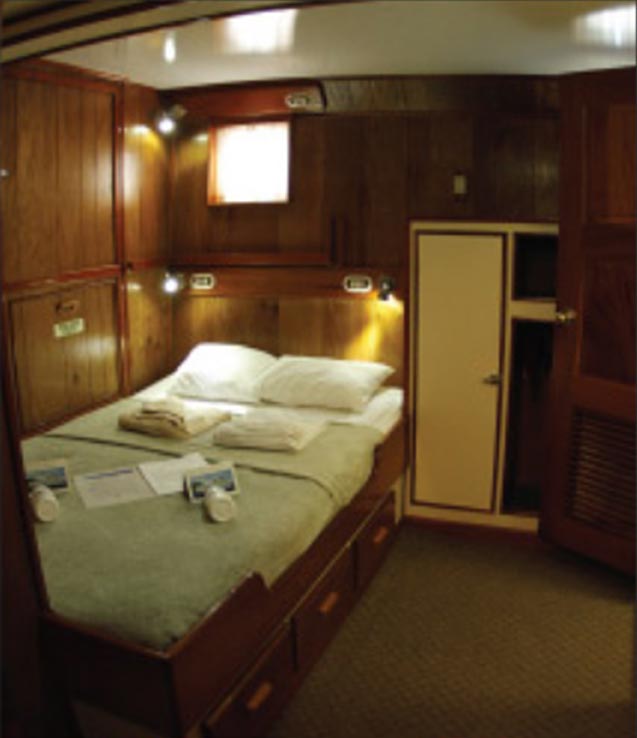
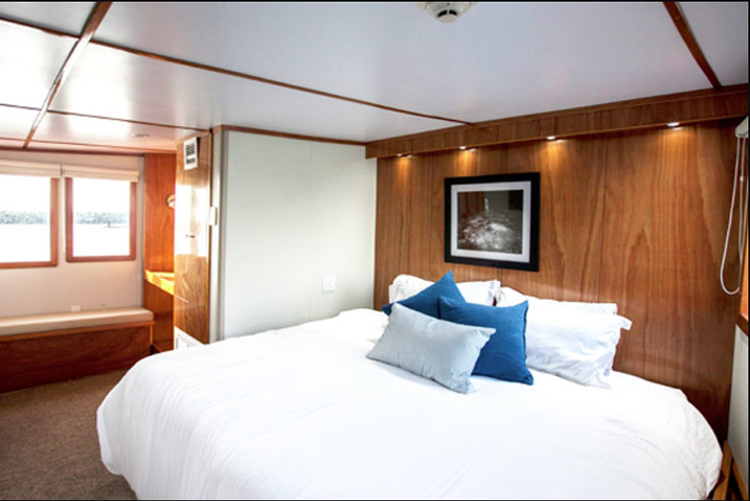

Belle Amie
140″ long x 33″ wide
500 tons
2 Premium suites that can convert to 1 VIP suite
6 Superior suites
8 Double/Single Staterooms
1 Triple berth
Dining room
Lounge area

Nautilus Explorer
132′ long, 27′ wide. Small ship size with a much bigger feel
11 – 12 mph cruise speed
2 Premium suites
2 Superior suites
8 Double/Single Staterooms
1 Triple berth room
Steel hull and superstructure for your safety
7000 gallon fresh water capacity and 3600 gallons-per-day water maker allowing you to shower as often as you like
Quiet twin 70 kw electric generators operating 24 hours per day with precise voltage and frequency control. Ship’s power is 110 volts ac , 60 Hz)
Air-conditioning and heating throughout. Comfort in every climate

The Nautilus Under Sea
108 ft / 28 m        Beam: 24 ft / 7.4 m      Draft: 8 ft / 2.5 m
180 tons
For 17 guests:    1 Triple Co-ed Stateroom,  6 Double Staterooms, 1 Premium Stateroom.
All guest cabins have heads & showers and individual AC control
15-ton deck mounted crane, 38 ft. by 24 ft. (11m by 7.4 m) work deck space, fully equipped workshop with arc-welding and oxy-acetylene equipment/supplies, 16 personal dive gear boxes 15 personal camera lockers with Stabilized and surge protected 110v outlets Air conditioning throughout the vessel, Sundeck and lounge chairs, Washer and dryer, Refrigerator and ice machine.
- Belle Amie
-
Accommodations
The Nautilus Belle Amie offers accommodations to suit all preferences ranging from luxurious premium suites to cost effective staterooms on the lower deck.
The “Nautilus Belle Amie†is the largest most luxurious live aboard shark diving vessel on Earth. At 140 feet long, 33 feet wide and 500 tons she is incredibly spacious and stable. Built in 2005 at Bollinger Shipyard USA, and completely refurbished in 2014 with a new interior and dive equipment.
The Nautilus Belle Amie has a steel hull and super structure built with the highest standards and craftsmanship. This beautiful ship has everything! With 2 Premium suites on the main deck that can be combined into 1 VIP suite.
The upper deck has 6 Superior suites with ocean views. The lower deck has 8 Staterooms and 1 Triple berth. She has a enormous interior dining room and lounge area. There is a huge sun deck on top with a bar and hot tub.
The Dive Deck is massive with all the space and amenities you can imagine. Rebreather friendly and NITROX is available. The 5 new shark cages are “State of the Art†with some amazing capabilities.





Premium Suites
Emerald & Cortes
Two spacious premium suites are available on the main deck. En-suite bathrooms with double sinks and showers. Large windows, plenty of sunlight, large storage area and personal flat screen TV.




Superior Suites
Cuervo, Inde, Dofleini, Rosario, Swell, Nautilus
The Nautilus Belle Amie has 6 superior suites on the upper deck. Superior rooms have large double windows.




Staterooms
A-H
The lower deck has 8 comfy staterooms with various bed configurations (single and double occupancy). An affordable triple occupancy stateroom is also available .
Room Features
- Bathrooms with showers in all suites.
- Internet via Wi-Fi.
- Windows and/or portholes in every room.
- Superior windows.
- Double Portholes.
- Beautiful bedding, and comfortable details.
- Air conditioning (AC) and heating throughout the ship.
- A dedicated and enthusiastic crew of men and women from around the world.
- Dinning Room.




- Nautilus Explorer
-
Nautilus Explorer
The Nautilus Explorer is a Millennium Boat Built and Launched in Vancouver, B.C. in 2000.
For a small ship, the Nautilus Explorer feels “plenty big†(or so our guests tell us). There is ample room to find a quiet place to read, chat, fill out your divelog or journal or work on editing the images you shot that day – whether in the separate dining room, main salon or one of the upper sundecks. And there is nothing like a soak under the stars in the sparkling clear fresh water of our hot tub after a day of diving or exploration. The main salon also serves as the ship’s entertainment center with very “comfy†couches, a great library, a well stocked bar and select evening video showings, presentations and slide shows.
- 132′ long, 27′ wide. Small ship size with a much bigger feel
- 11 – 12 mph cruise speed
- Steel hull and superstructure for your safety
- 7000 gallon fresh water capacity and 3600 gallons-per-day water maker allowing you to shower as often as you like
- Quiet twin 70 kw generators operating 24 hours per day with precise voltage and frequency control. Ship’s power is 110 volts ac , 60 Hz)
- Air-conditioning and heating throughout. Comfort in every climate
Ship Accommodations





Staterooms
( All eight lower deck )
Staterooms have private heads with separate shower stalls, central air conditioning and measure 90 square feet. Six of the staterooms have side by side beds. Two of the staterooms have large double beds and additional storage area. There is also one co-ed triple occupancy stateroom.
Hot Tub Deck
Three superior suites on the hot-tub deck measure 145 sq. ft and have large exterior windows. They each have private facilities, a desk and either bureau or wardrobe. Two of these suites have doors that open directly outside. The third suite boasts a large flat screen TV and DVD player. The premium suite is also located on the hot-tub deck and is twice the size of the other suites. It has a separate bedroom and lounge each with a large flat screen TV and DVD player, private facilities with a full-size bathtub and shower plus large private windows looking out on an ocean view. The lounge in this suite has a beautiful floor to ceiling picture window.


















- Nautilus Under Sea
-
The Nautilus Under Sea
Vessel Specs:
[table id=10 /]
Accommodations
- Double Staterooms
- Triple Stateroom
- Premium Suite









- Compare
-

Belle Amie
140″ long x 33″ wide
500 tons
2 Premium suites that can convert to 1 VIP suite
6 Superior suites
8 Double/Single Staterooms
1 Triple berth
Dining room
Lounge area
Nautilus Explorer
132′ long, 27′ wide. Small ship size with a much bigger feel
11 – 12 mph cruise speed
2 Premium suites
2 Superior suites
8 Double/Single Staterooms
1 Triple berth room
Steel hull and superstructure for your safety
7000 gallon fresh water capacity and 3600 gallons-per-day water maker allowing you to shower as often as you like
Quiet twin 70 kw electric generators operating 24 hours per day with precise voltage and frequency control. Ship’s power is 110 volts ac , 60 Hz)
Air-conditioning and heating throughout. Comfort in every climate
The Nautilus Under Sea
108 ft / 28 m        Beam: 24 ft / 7.4 m      Draft: 8 ft / 2.5 m
180 tons
For 17 guests:    1 Triple Co-ed Stateroom,  6 Double Staterooms, 1 Premium Stateroom.
All guest cabins have heads & showers and individual AC control
15-ton deck mounted crane, 38 ft. by 24 ft. (11m by 7.4 m) work deck space, fully equipped workshop with arc-welding and oxy-acetylene equipment/supplies, 16 personal dive gear boxes 15 personal camera lockers with Stabilized and surge protected 110v outlets Air conditioning throughout the vessel, Sundeck and lounge chairs, Washer and dryer, Refrigerator and ice machine.
Island of Guadalupe Information
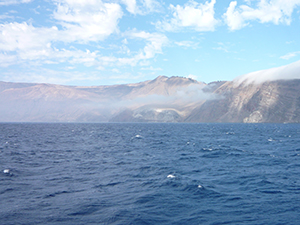
Isla Guadalupe is one of Mexico’s most isolated islands. It is this very fact that makes Guadalupe’s flora and fauna so incredibly unique. This remote outpost of land with its diverse landscape makes Guadalupe a sheer magnet for marine life above and below the water. Guadalupe Island lies 160 miles off the Baja California coast and 220 miles south of San Diego. The island is approximately 20 miles long and varies in width from 4-6 miles. Open ocean currents wash Guadalupe with crystal clear water often exceeding 100 feet of visibility which is a far cry from Great White shark diving California waters. Water temperatures usually range from 65-75 degrees Fahrenheit.
Guadalupe Island has been a world-class sport-fishing destination frequented by the San Diego long-range fishing fleet for many years. Known primarily for its fishing, Guadalupe Island is now making a name for itself as host to one of the worlds most prolific populations of Great White Sharks. First discovered and observed by the San Diego sport-fishing fleet, Guadalupe Island’s Great White Sharks now attract a worldwide audience. The majestic North West side of the island is perhaps the most awe-inspiring sight upon arrival. The North Head is solid rock rising to an amazing 4200 feet above sea level. Such a pronounced vertical protrusion into the atmosphere in a flat seascape such as the Pacific Ocean actually causes unique localized weather conditions. Large, dense fog banks which shroud the islands higher elevations during the day and spill over the lee side in the afternoons much like smoke pouring out of a witch’s cauldron. Von Karmon vortices are also a common occurrence.
These are localized winds accelerated by prevailing trade winds wrapping around Guadalupe Island. Adding to the island’s mystique is the landscape itself. Geologically speaking Guadalupe Island is a spectacular sight. Large upheavals of solid rock and the numerous cinder cones tell a tale of Guadalupe’s volcanic origins. The sheer cliffs that make up much of the island’s coastline are magnificently colored in bands of red and orange. Because of the island’s remote location there are many plants endemic to Guadalupe. Decimated by goats brought to the Island by the Russian fur traders, Monterey Pines and Guadalupe Cypress once formed high altitude forests, which condensed moisture from clouds into fresh water springs. Large Oaks as well as Guadalupe Palms call the island home. In recent years, conservation efforts have helped these ancient forests to re-gain a foothold at the island.
Guadalupe Island also supports a large marine mammal population. The northern most beaches are home to breeding colonies of Northern Elephant Seals and Guadalupe Fur Seals. Both species were hunted to near extinction during the early 1900’s. Fortunately, enough individuals managed to elude sealers to ensure both species survival. Now in abundance. California Sea Lions and Bottlenose Dolphin are also a common sight. Of course one of the island’s most notable inhabitants is the Great White Shark. The sharks make appearances at Guadalupe Island seasonally. Their presence coincides with warm water and Yellowfin Tuna, which are targeted by Southern California sport fishermen. These sharks are now a common sight in the fall months and have made Guadalupe Island the worlds best location for Great White Shark diving.The population of Great Whites at Isla Guadalupe is so reliable that it has been the subject of numerous documentaries featured on channels such as Discovery, National Geographic and the BBC.
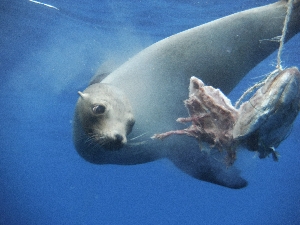
Shark Research
When you book with us you can be assured that a portion of your ticket price will directly fund and support the ongoing efforts to preserve and protect Great White Sharks at Guadalupe Island. From the onset, we have provided financial and logistical support to research efforts at Guadalupe.
In 2004, Mauricio Hoyas, now a PHd from CICMAR in La Paz in tandem with Dr. Peter Klimley from the University of California, Davis established what has since become a viable research effort at Isla Guadalupe. This ongoing effort has produced significant results in terms of shark data and has made great advances in understanding why Great White Sharks congregate at Isla Guadalupe. In 2004, Mauricio and his team deployed the CICMAR/UC Davis RAP array system. This system of shark monitoring helped produce volumes of information on White Shark movements at the island. Without the on-site support of the fleet vessels, and the local knowledge of the captains and crews this research project would not exist. Over the last two years Mr. Hoyas has functioned as an educator to the public, spending time aboard the shark vessels explaining his research to passengers. This process has lead to a greater understanding of the great white shark’s role in our oceans and has also illuminated the public to the importance of preserving one of Mexico’s great environmental treasures.
On-site support is critical to any scientific operation. In accordance with Mexican regulations shark vessels compile a daily log noting present conditions, shark diver information and shark sighting information. This data is then submitted to CONANP in Ensenada, Mexico providing them with almost unlimited information as it pertains to the white sharks at Isla Guadalupe. . We are also pleased to offer you the chance to assist in our research effort by providing much needed identification information from the shark cages. Over the years we have found that the contributions from our shark divers can be extremely useful to researchers at the water’s surface and we welcome your participation in that endeavour. Education is of primary importance when it comes to understanding and managing resources – this interaction facilitates that.
FAQs
Q. What water and air temperatures can I expect at Guadalupe Island?
A. Generally water temps vary between 62-72 F depending upon the month. Air temperatures can be low seventies in the evening to mid 80s during the day. It is usually cooler when there is cloud cover. Do use “bio-degradable, sea safe†sunscreen liberally during the trip. The sun can be intense down at the island.
Q. What is the visibility like on these trips?
A. Usually excellent! Many experienced and well traveled underwater photographers and videographers consider Guadalupe Island to be Nirvana for filming these animals. Over the last 20 seasons the visibility has averaged 80 ft, occasionally getting better than 120 ft. On a bad day or when a “mung†layer swings out from the shore vis might drop to 20 ft. for a short period until the wind and current swing the boat away into better visibility.
Q. Will we be going to several dive sites?
A. If the weather cooperates we usually will set up in our favorite white shark site and stay there for the duration of the trip. We have found that the white sharks will often stay in the area around the boat. Occasionally the white sharks will appear before we can get the cages into the water. There is an ole fishermen’s saying, “Don’t leave fish to find fish!â€
Q. How much dive time can I expect during the trip?
A. That’s up to you. Most divers have averaged 10-15 hours in the water with the Great White Sharks the trip. The rotations into the submersible cages last about 45 min. each. The surface cages are open all day. While space is available you can stay as long as you want. Believe me, you’ll get plenty of water time, but there are lots of other things to do when you are not in the water. You can take surface shots of the white sharks cruising down the side of the boat, or you can relax. Keep you eyes open-occasionally these White Shark “breech†launching themselves up in the air! Hey you’re on vacation, enjoy it!
Q. What is the average size of the Great White Sharks at Guadalupe Island?
A. The White Sharks we’ve seen over the last two decades have ranged from a small 8 ft male to a hefty 18 1/2 ft female. I did see an honest 18 footer during the exploratory trip in 2000. Some of the guys on the boat thought it might have been 20 ft!! The thing to remember about these white sharks is that they get REAL BIG in girth as they grow.
Q. Can we get outside the cage to dive with the white sharks?
A. NO!! The rules of the reserve do not permit it.
Q. Can we go exploring on the island?
A. No. This trip is not geared for exploring the island. Guadalupe is a bio preserve; in order to go onto the island a special permit is required from the Mexican government.

